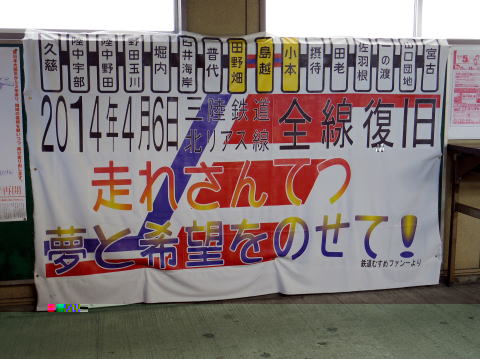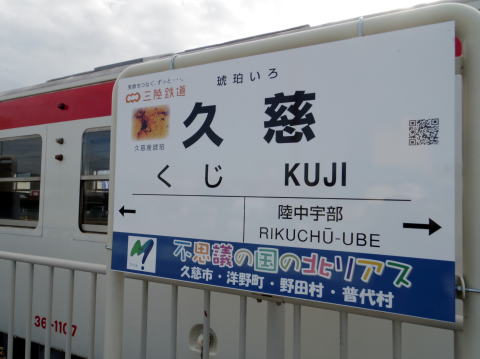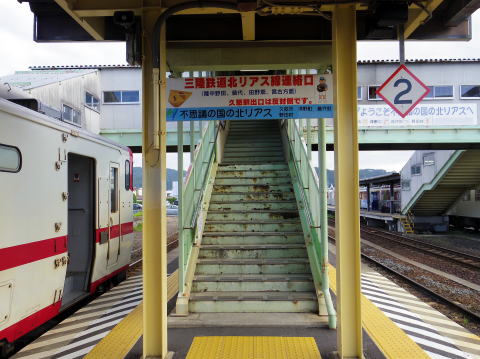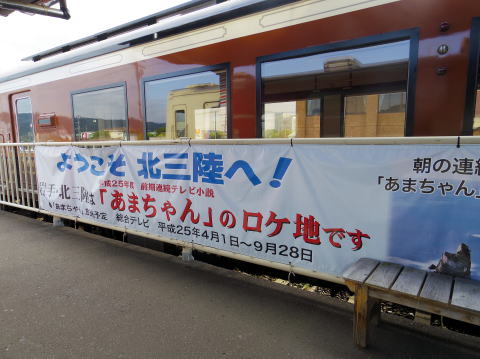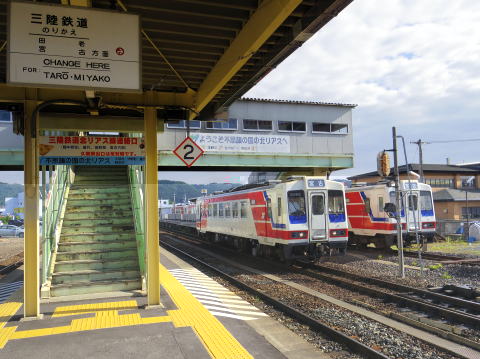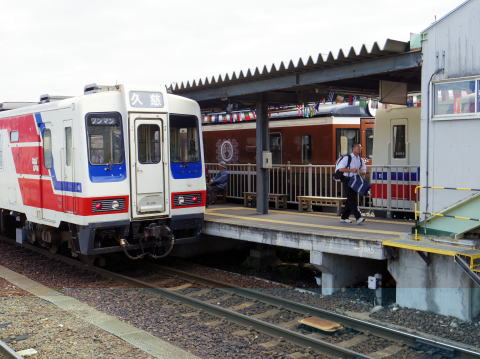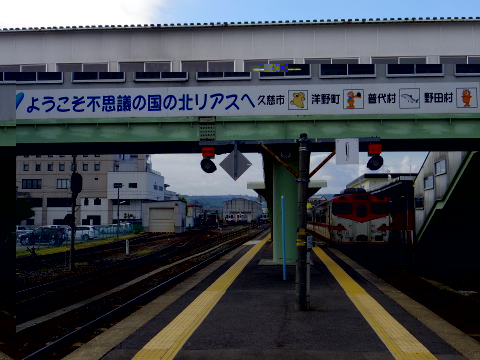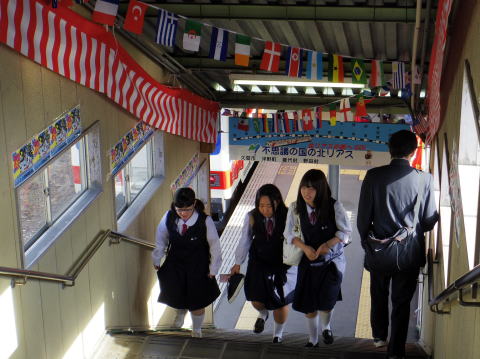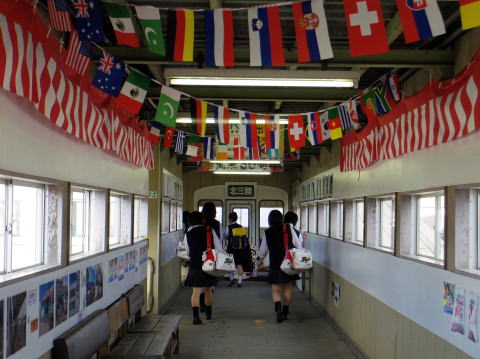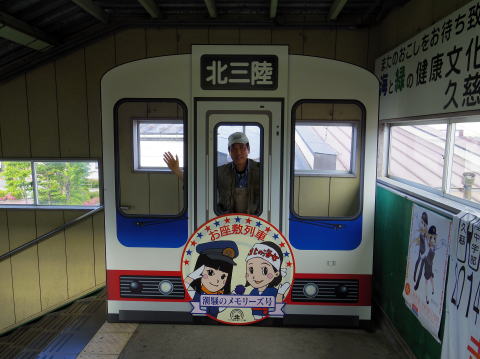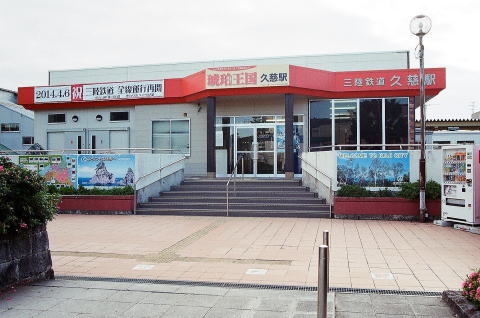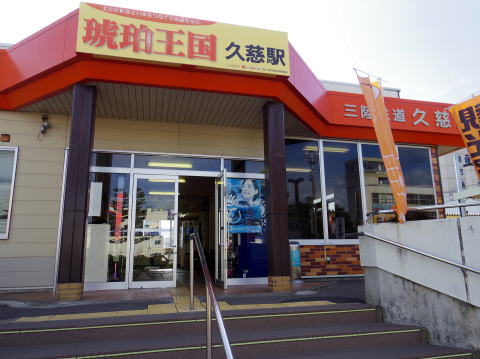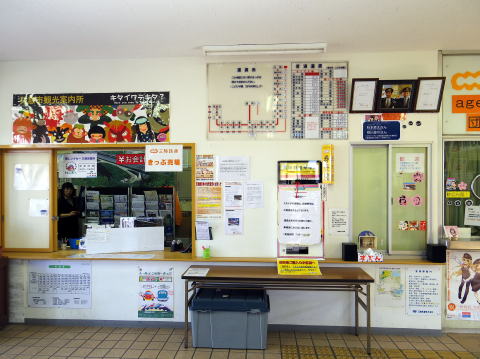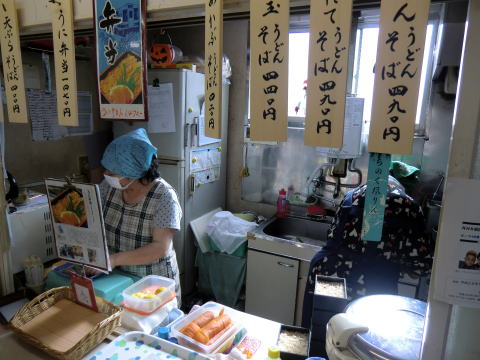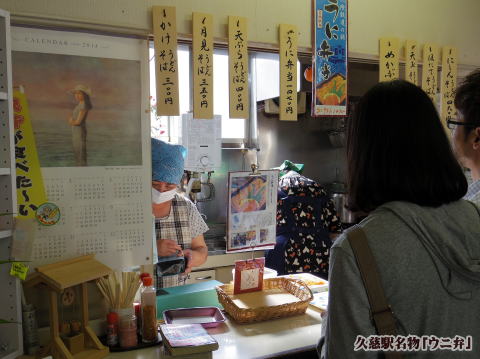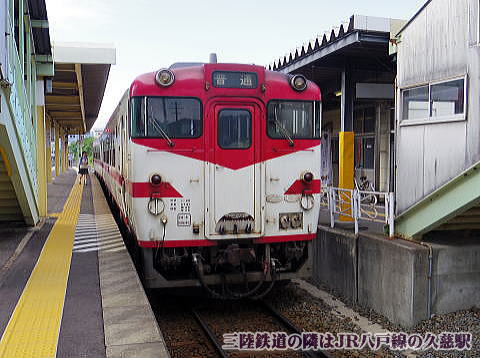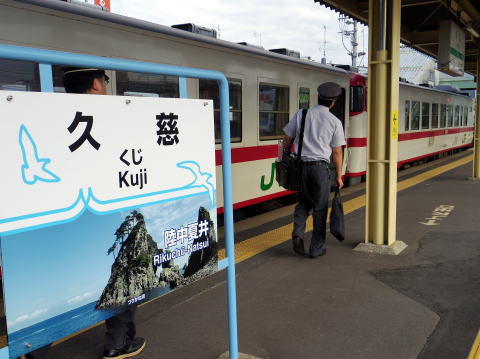
<陸前高田市 巨大な「希望のかけ橋(ベルトコンベア)」・道の駅>
震災前の陸前高田の「千本松原」は、この一本だけが流されず残ったが、市民の懸命の努力にもかかわらず塩害で枯れてしまった。しかし、市民の要望により復興の希望のシンボルとして幹から枝、葉の一本まで忠実に再現されたモニュメントは、海岸近くの砂浜に堂々とそびえ立つ。そのそばに壊れたままの陸前高田ユースホステルは、無残な姿を見せていた。
私は40年程前に、このユースホステルに泊まったことがある。松林の中にある静かなユースホステル、カヌー遊びのできるところだったが、今はその思い出だけが残るだけだ。
また、国道沿いの「高田松原 道の駅」の再建は、今のところなく、「希望のかけ橋」の工事用のトラックの駐車場になっていた。
この希望のかけ橋とは、陸前高田市の今泉地区に高台の住宅地を建設するための工事で掘削した土を運ぶためのベルトコンベアの専用つり橋で220mある。終わった後にこの橋がどうなるのか?ちょっと気になった。
その横に「夢ある未来に願いを込めて」の大きなかんばんと二つの堤防の間に松原を再現する建設図が描いてあった。ここでの復興工事は進んでいるようだが、ちょっと考えてしまった。
<Rikuzentakata City: A huge bridge of hope (conveyor belt) / Roadside Station>
Only this one tree survived from Rikuzentakata's "Senbonmatsubara"
before the earthquake, but it withered due to salt damage. However, as
a symbol of hope for reconstruction, the monument, which has been faithfully
reproduced from the trunk to the branches and even a single leaf, stands
majestically on the sandy beach near the coast. The ruined Rikuzentakata
Youth Hostel was next to it, showing a tragic appearance.
I have stayed at this youth hostel about 40 years ago. It used to
be a quiet youth hostel in the pine forest, a place where you could go
canoeing, but now only memories remain.
Also, there has been no rebuilding of the Takatamatsubara Michinoeki along the national highway so far, and it was used as a parking lot for trucks for the construction of the Bridge of Hope.
This bridge of hope is a 220m long suspension bridge with a conveyor belt
for transporting soil excavated during the construction of a residential
area on a hill in the Imaizumi district of Rikuzentakata City. What will
happen to this bridge after it's over? I was a little worried.
Next to it, there was a large Kanban board with the words "Praying
for a dreamy future" and a construction drawing that reproduced the
pine grove between the two embankments. It seems that the reconstruction
work is progressing here, but I thought about it for a moment.
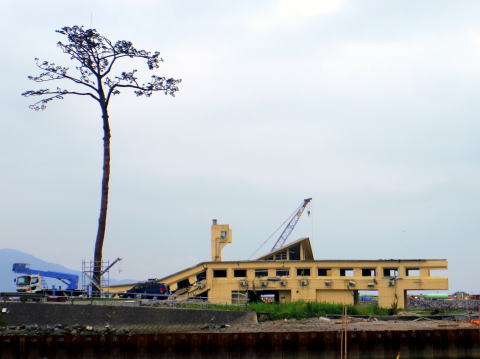
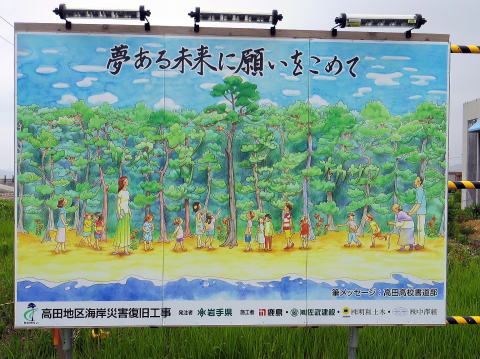
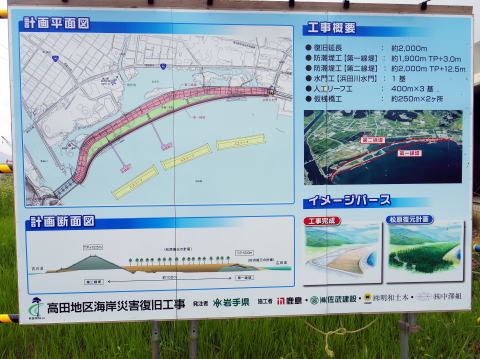
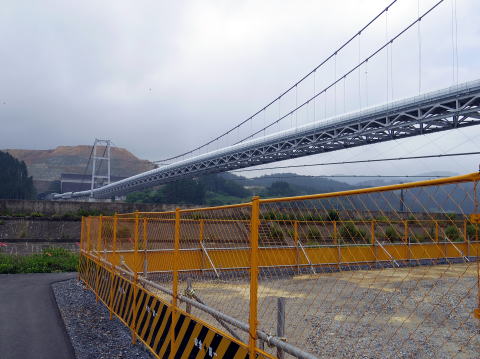
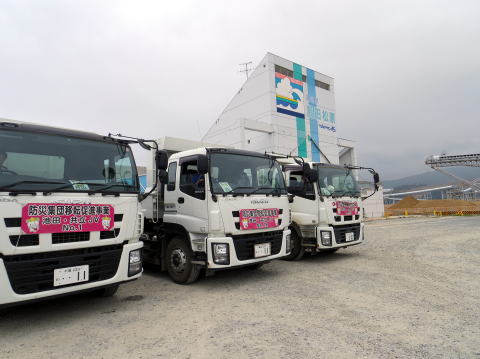
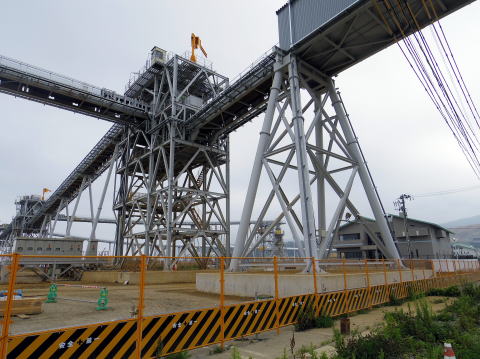
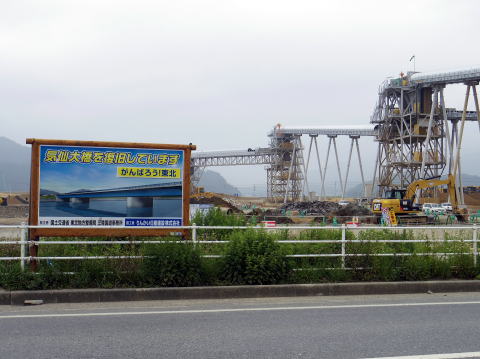
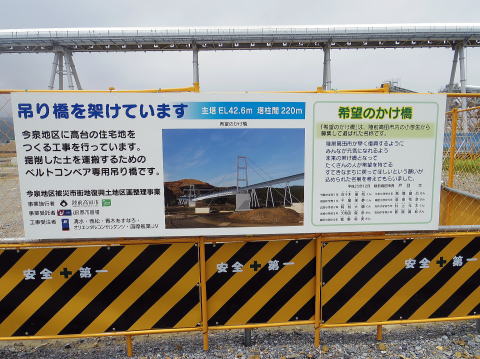
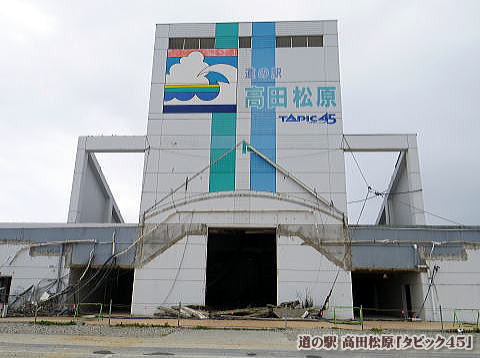
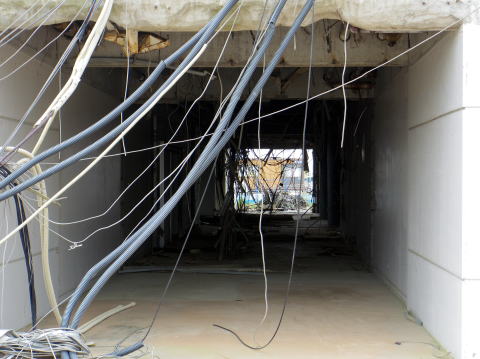
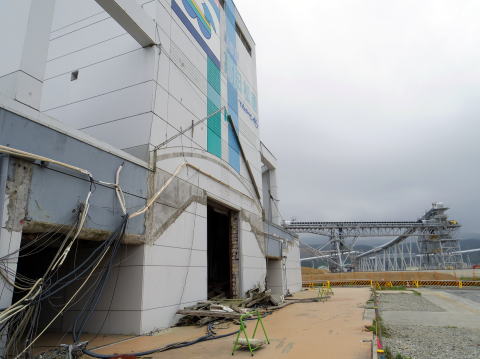
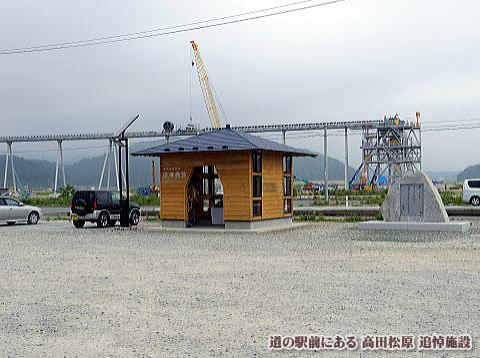
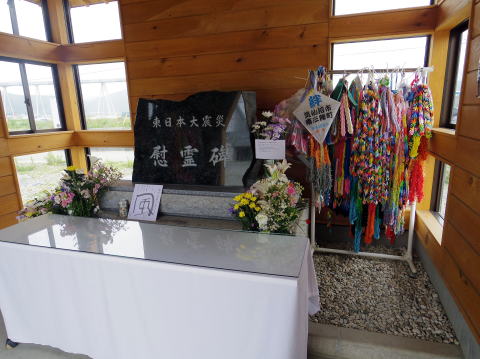
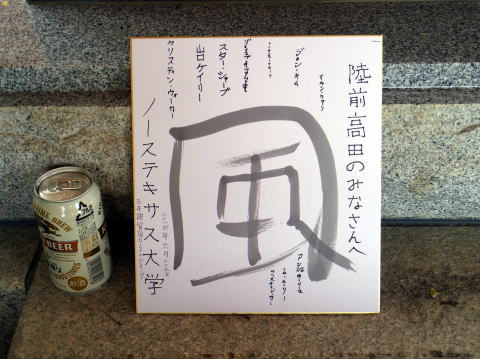
<大槌町>
2011年3月11日の地震発生後、役場前で津波への対策を準備中に津波に襲われ、町長以下40人の職員の犠牲を出した大槌町役場は、その正面入り口前側の部分が震災遺構として残すことになり、後ろ半分を取り壊す工事が行われていた。
また、旅行会社による震災ボランティアツアーの人たちも、未だに多くの方が訪れ説明を聞き、その恐ろしさを感じ取っているようであった。
<Otsuchi Town>
After the earthquake on March 11, 2011, the Otsuchi town hall was attacked
by a tsunami while preparing for tsunami countermeasures in front of the
town hall, killing 40 employees including the mayor. It was decided to
leave it as an earthquake disaster remnant, and construction was being
carried out to demolish the rear half.
Also, many of the people on the disaster volunteer tours by travel agencies
still visited and listened to the explanations, and seemed to sense the
terror.
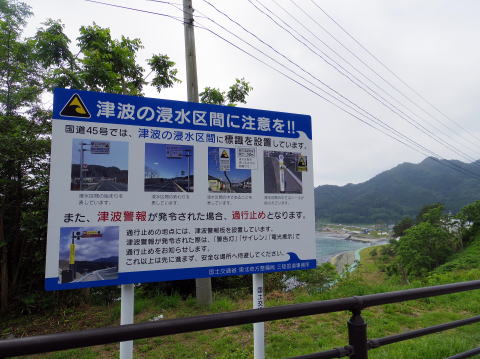
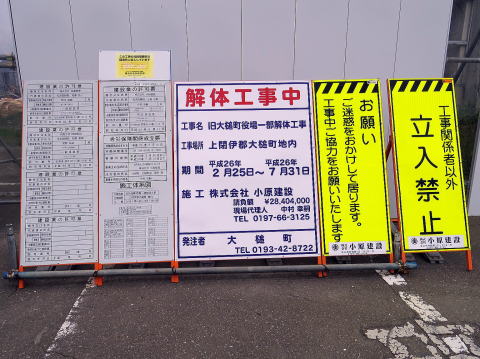
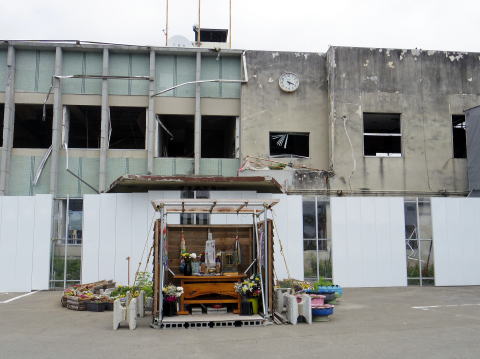
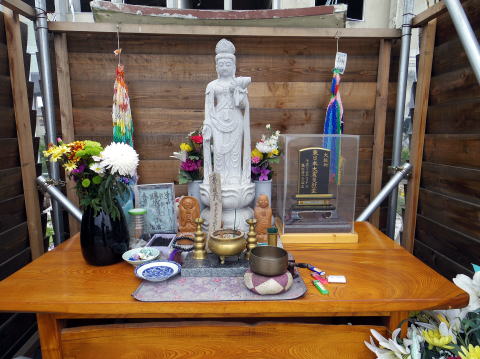

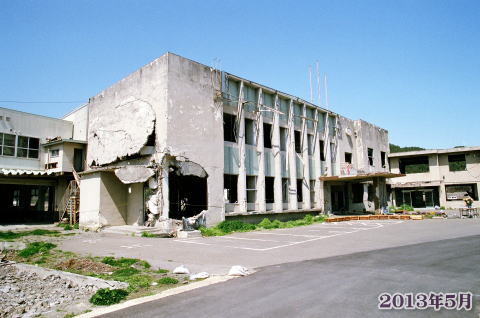
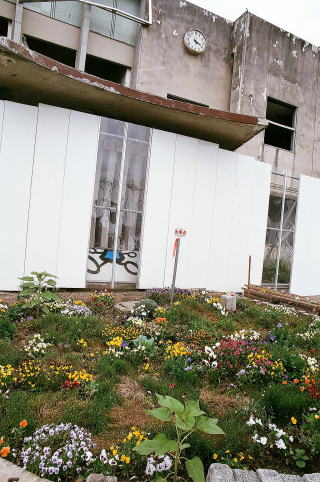
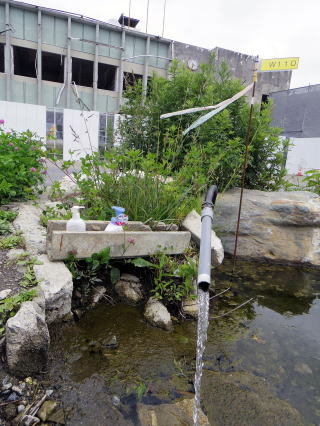

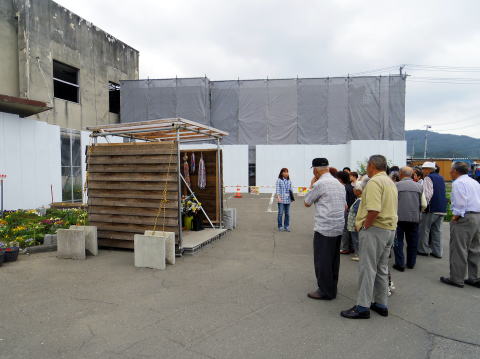
<山田町 JR陸中山田駅・山田漁港>
国道45号線を挟み、東西それぞれ100mの所にある山田漁港と陸中山田駅、いずれも津波の爪痕は痛々しい。被災地はどこでも同じように、このあたりも一面、壊れたコンクリートの建物、鉄筋がむき出しのままになっている建物が3年を過ぎても当時のままだ。
山田漁港の港内のしゅん渫は、ある程度終了したが、漁船を陸揚げする場所や養殖いかだは被災したままになっている。港の壊れた堤防、護岸工事がこれから始まる様子、近くにはそれに使う大きな土台が準備されていた。
JR陸中山田駅は、1年前よりもさらに駅の存在が分からなくなっていた。ホームも線路もその跡も、痕跡は何も無い。バス停も移動し、駅前ロータリーの丸い跡だけが、わずかに残るだけだ。
<Yamada Town JR Rikuchu Yamada Station/Yamada Fishing Port>
Yamada Fishing Port and Rikuchu-Yamada Station, located 100m east and west across National Route 45, both suffered from the tsunami's scars. Like everywhere in the disaster area, this area is still covered with broken concrete buildings and buildings with bare reinforcing bars, even after three years have passed.
Although dredging within the Yamada fishing port has been completed to
some extent, the landing sites for fishing boats and aquaculture rafts
remain damaged. There was a broken embankment in the port, the seawall
construction was about to begin, and a large foundation was being prepared
nearby.
JR Rikuchu Yamada Station has become even more obscure than it was a year
ago. There is no platform, no track, no trace of it. The bus stop has also
moved, and only the round marks of the roundabout in front of the station
remain.
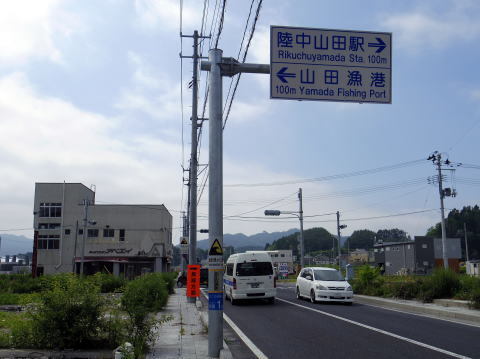

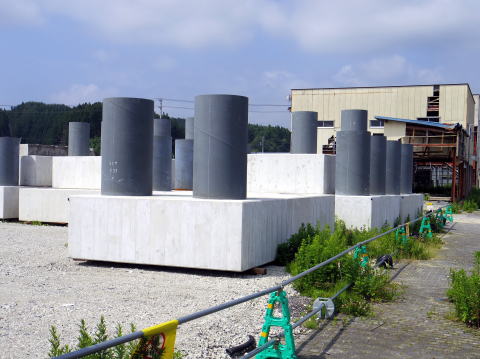
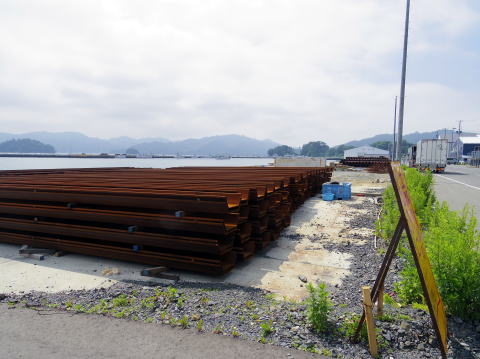
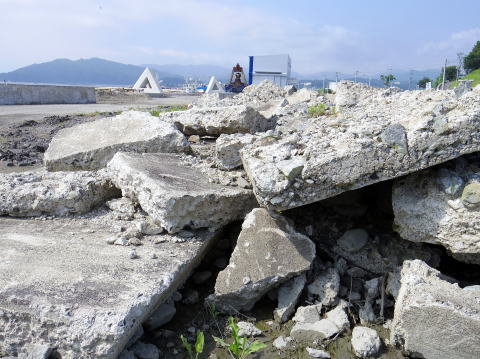
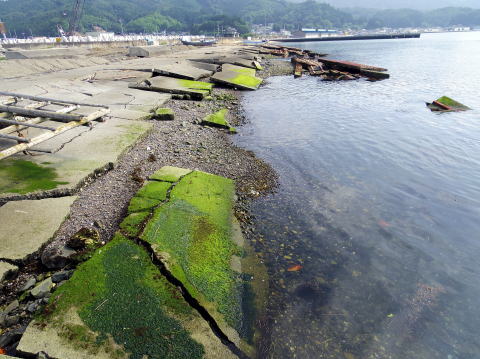
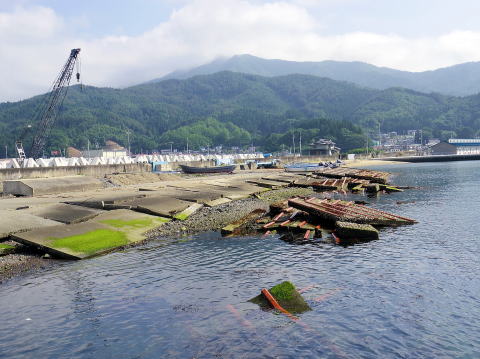
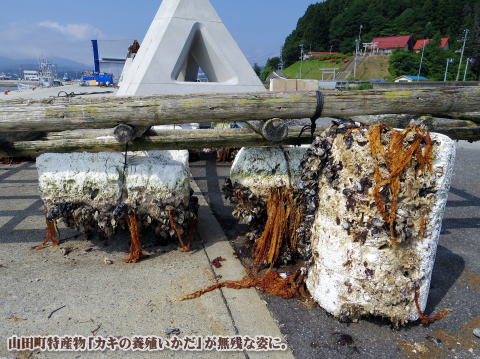
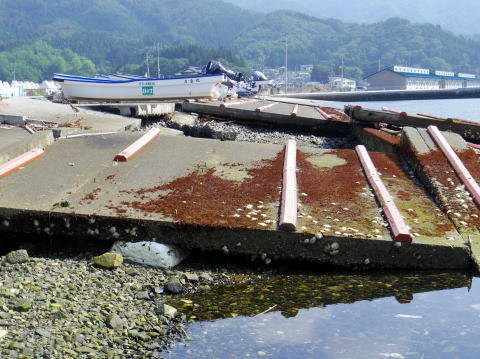
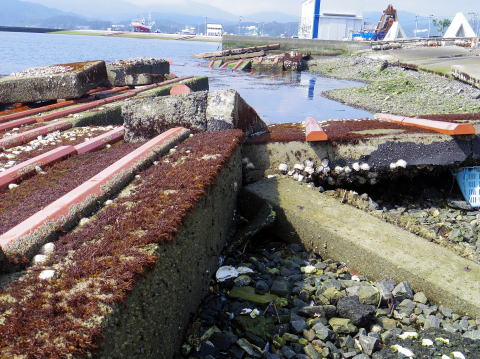
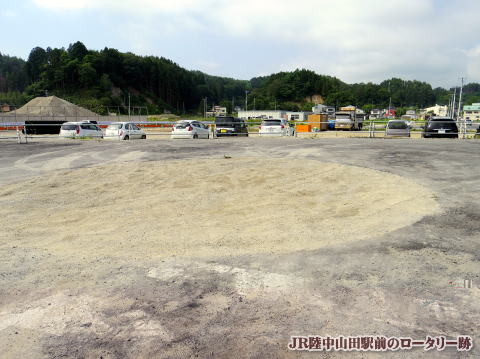
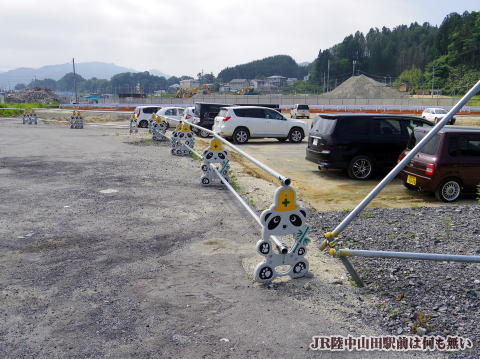
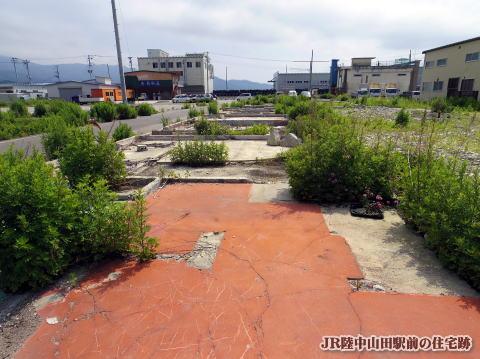

<宮古市 田老地区>
震災遺構 「たろう観光ホテル」岩手県宮古市田老地区
田老観光ホテルが建つ宮古市田老地区は、①1896年(明治津波)②1933年(昭和津波)そして今回2011年(東日本大震災)と、100年余で3度も津波が襲い壊滅的な被害を受けた地区。津波は高さ5mはある防潮堤を軽々と乗り越え、約800戸が流された。 ホテルはその堤防から約100mの所、津波の直撃で6階建ての3階まで壁がぶち抜かれ、赤さびた鉄骨や内装がむき出しになっている。
また、ホテルのすぐ隣にプレハブ小屋があり、このホテルの社長である松本さんが、当時6階から撮った、津波の来る直前から街が破壊されるまでを撮影したビデオ(このビデオは、この場所でしか観られない)を上映している。
※2014年3月に初の震災遺構として登録され、現在は宮古市所有。
<Miyako City Taro Area>
Earthquake ruins ``Taro Kanko Hotel'' Taro district, Miyako City, Iwate
Prefecture
The Taro district of Miyako City, where the Taro Kanko Hotel is located,
was devastated by 3 tsunamis in 1896 (Meiji Tsunami), 2) 1933 (Showa Tsunami),
and 3) 2011 (Great East Japan Earthquake). The tsunami easily climbed over
a 5m-high seawall and washed away about 800 houses.
In addition, there is a prefabricated hut right next to the hotel, and
Mr. Matsumoto, the president of this hotel, shot a video from the 6th floor
at the time, from just before the tsunami hit until the city was destroyed
(this video is It is showing a movie that can only be seen at a place).
*The building was first registered as an earthquake disaster ruins in March 2014 and is currently owned by Miyako City.
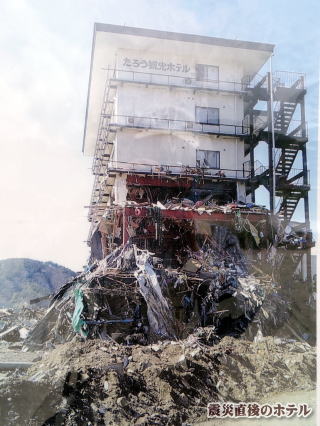
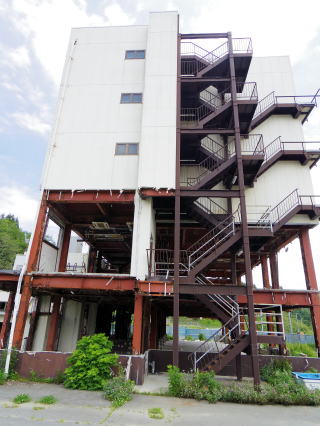
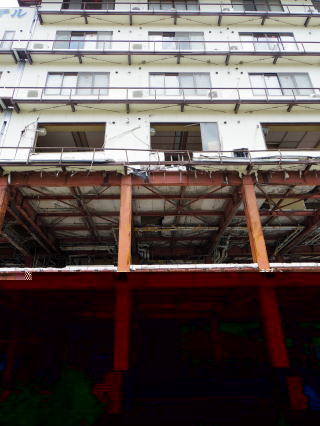
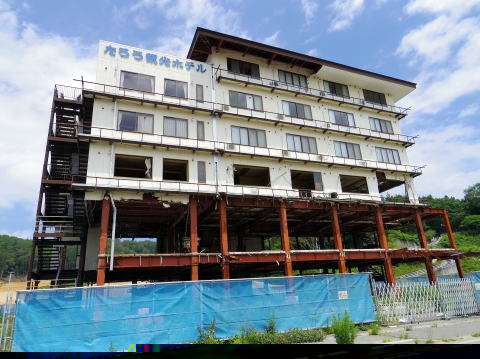
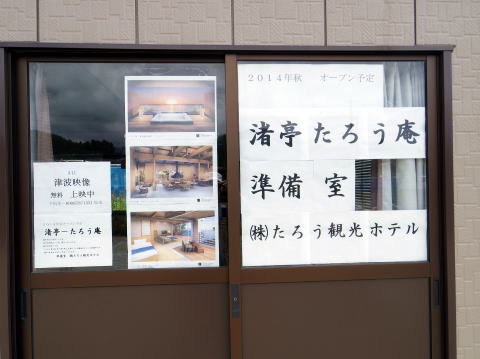
<防潮堤と田老漁港>
5mの防潮堤で守られるはずだったが、軽々と超えた大津波、防潮堤が壊れて見えないはずだった、「たろう観光ホテル」も見えている。15mの防潮堤を建設して再建計画の看板が新しい。
<Tide embankment and Taro fishing port>
It was supposed to be protected by a 5m seawall, but the tsunami easily
exceeded it, and the "Taro Kanko Hotel", which was supposed to
be invisible because the seawall was broken, is also visible.
The signboard of the rebuilding plan with the construction of a 15m seawall
is new.

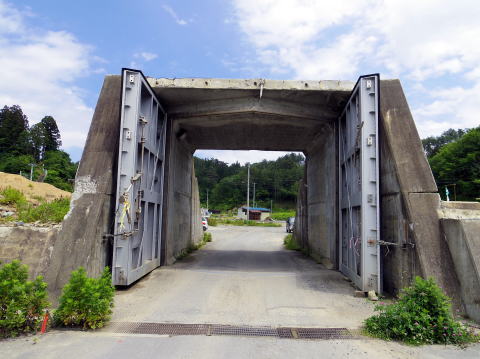
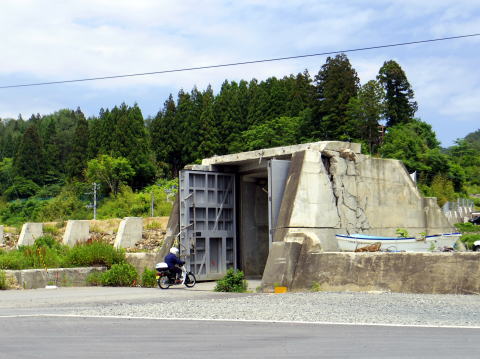
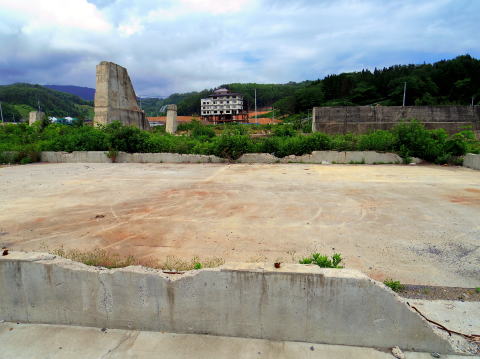
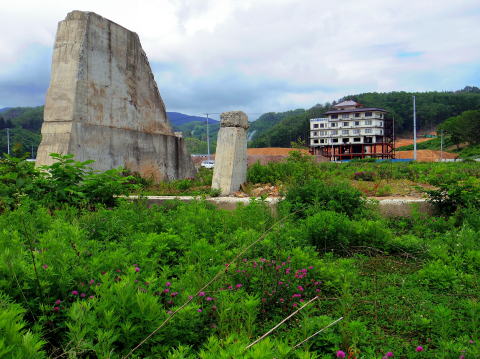
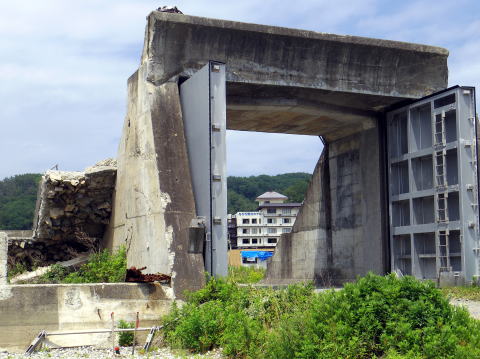
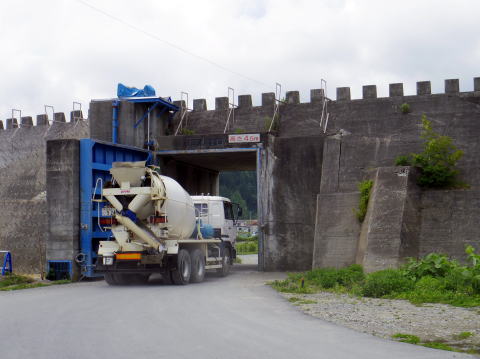
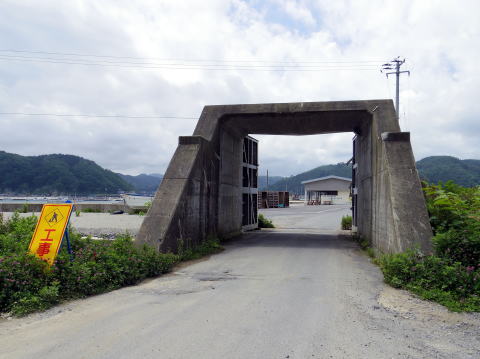
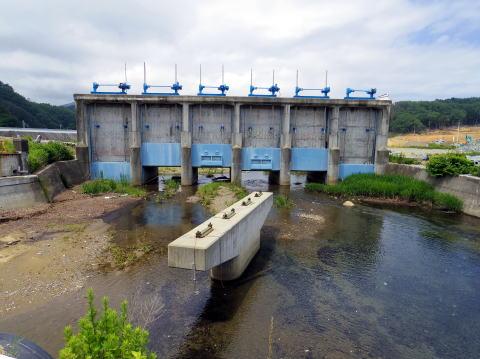
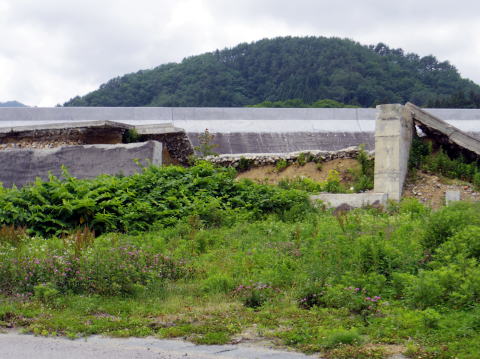
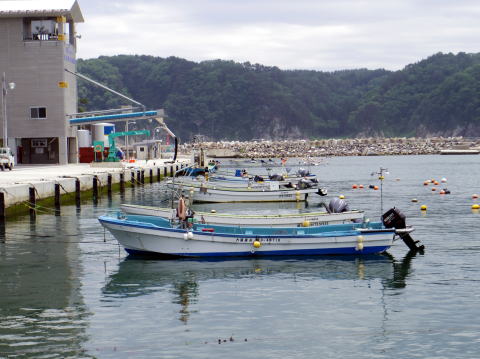

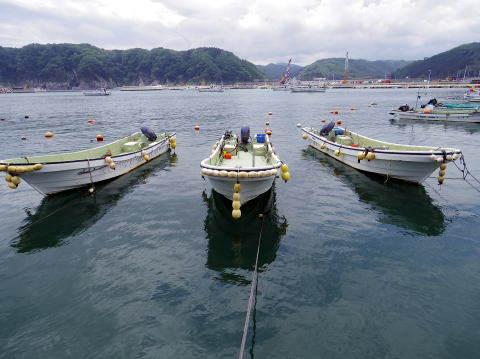
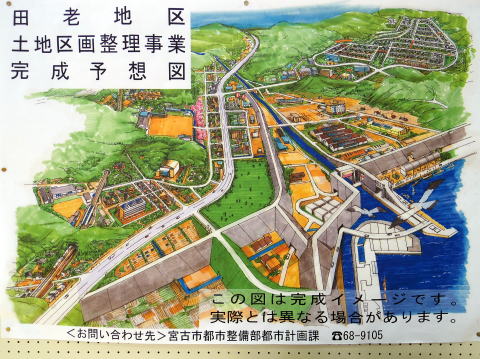
<たろちゃんハウス>
宮古市田老地区の中心部は、東日本大震災の津波で壊滅的な被害を受け、その仮設住宅を、元国民年金保養施設“グリーピア三陸みやこ”の敷地内に407戸が建てられ、約1000人が生活することになった。
しかし、周辺には以前より商店街がなく、仮設住宅に移ってからの買い物の利便を図ることと、被災した商店の再建を図るため、“田老スタンプ会”が中心となり、2011年5月15日に仮設共同店舗「たろちゃんテント」がオープンした。
“グリーンピア三陸みやこ”の駐車場に10m四方のテント二張り、17店舗が出店し、その後、2011年9月8日に仮設共同店舗は完成し、9月25日に、仮設商店街「たろちゃんハウス」としてオープンし、現在に至っている。
<Taro-chan House>
The central part of the Taro district of Miyako City was devastated by
the tsunami of the Great East Japan Earthquake, and 407 units of temporary
housing were built on the grounds of the former national pension resort
"Gripia Sanriku Miyako," housing approximately 1,000 people.
I got to live.
However, there were no shopping streets in the area, so on May 15, 2011,
the temporary joint store "Taro-chan Tent" was opened in order
to facilitate shopping after moving to the temporary housing and to rebuild
the damaged shops. ” opened.
On September 8th, 2011, two 10m square tents were set up in the parking
lot of "Greenpia Sanriku Miyako", and 17 stores opened. ” and
continues to this day.
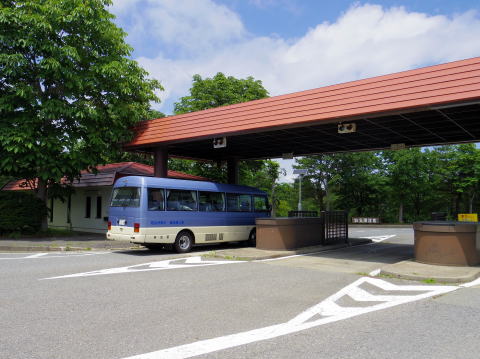
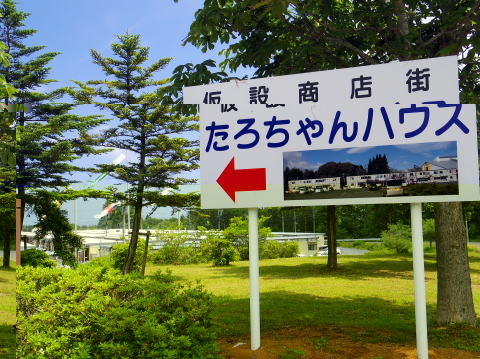
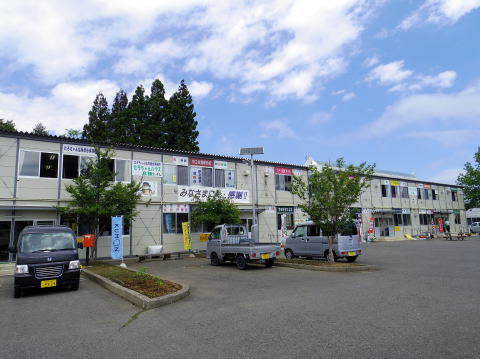
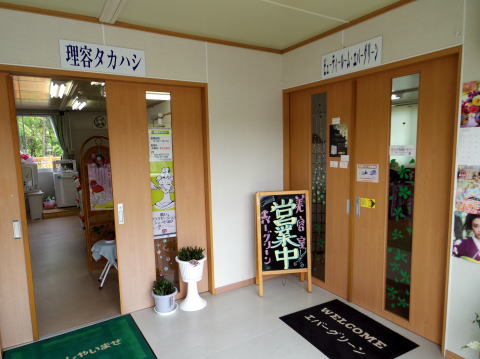
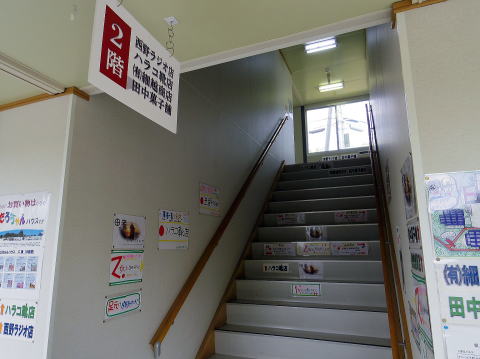
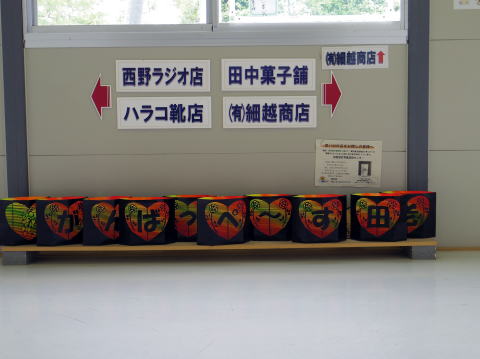
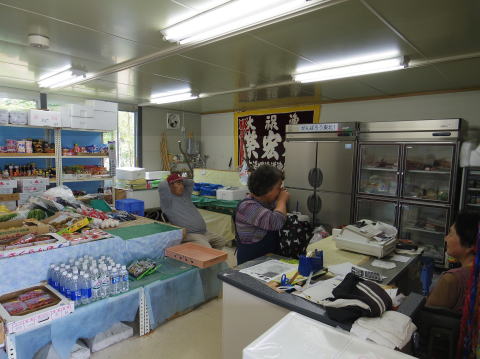
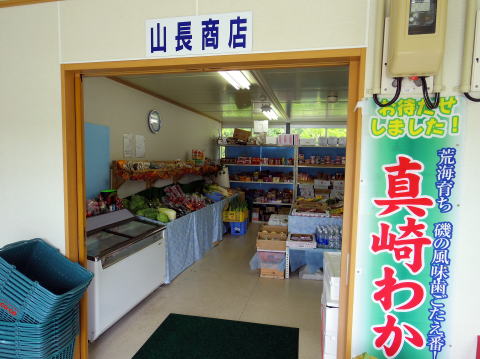
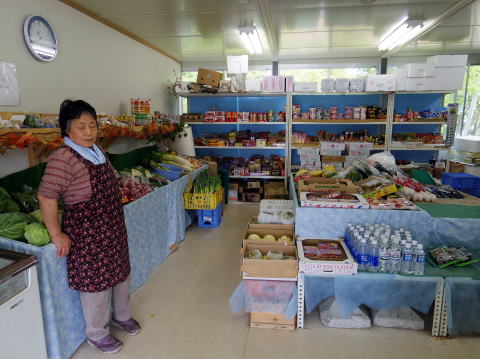
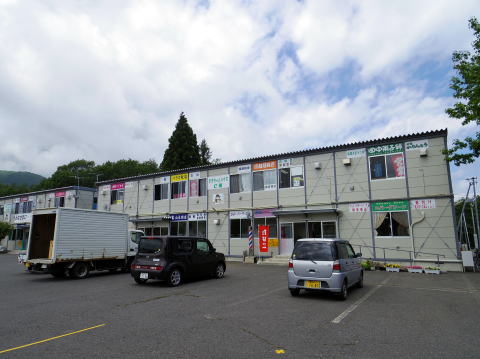
<「田老地区仮設住宅」407戸>
“グリーンピア三陸みやこ”の入口の右手下に広がる仮設住宅の屋根は、一見、太陽光発電パネルのようだった。
ここの状況を知らなかった私は、太陽光発電の基地かと思ってしまった。下に降りていき初めて仮設住宅であることが分かった。その数407戸、400世帯が住んでいた。
たくさんの住宅があるがきわめて静か、パラソルの下にいすを置き、くつろいでいる人たちに話を聞いた。
「たろちゃんハウスは、とても便利。震災から3年経って今の生活に慣れはしたけど、この先のことはどうなるか分からない」「仮設に入居した人の3分の1は退去したよ、結局お金の問題、お金がある人は他の地域に引っ越すが、そうでない人はこのまま…(400世帯から260世帯に減少)」「もう年だし、今を生きていくしかないし、元の生活には戻れないし帰れないし、また新たな環境で生活するのも大変だし、あまり考えたくない」「結局のところ、もう私たちのことは忘れされれる運命だと思う。他人事でしか過ぎないかな~」
<"Taro district temporary housing" 407 units>
At first glance, the roof of the temporary housing spread out to the right
of the entrance to Greenpia Sanriku Miyako looked like solar panels.
I didn't know about the situation here, so I thought it was a solar power generation base. When I went downstairs, I realized that it was temporary housing for the first time. 407 houses and 400 households lived there. Although there are many houses, it is extremely quiet, and I spoke to people relaxing in chairs under parasols.
"Taro-chan House is very convenient. It's been three years since the earthquake, and I've gotten used to life now, but I don't know what will happen in the future."
“One-third of the people who moved into the temporary housing moved out, so in the end it was a money issue. Those who had money moved to other areas, but those who didn’t had the money remained as they were… (decrease from 400 households to 260 households).”
"I'm getting old, I have no choice but to live in the present, I can't go back to my old life, and it's hard to live in a new environment, so I don't want to think about it too much."
“In the end, I think we are destined to be forgotten.
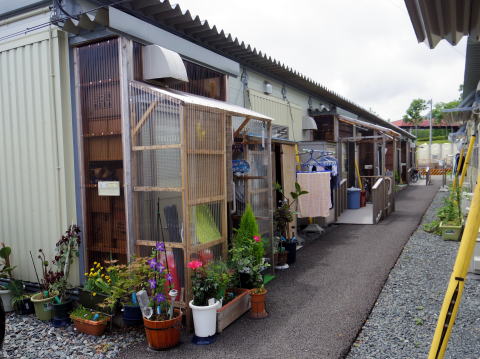
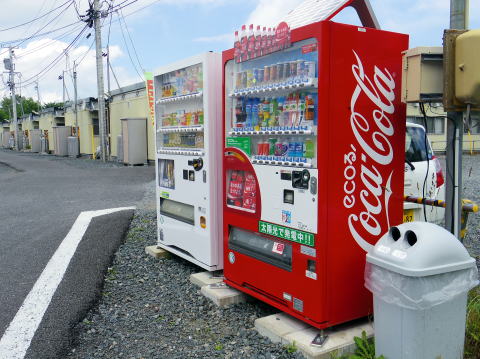
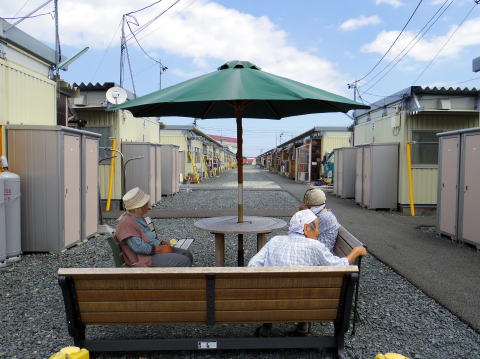

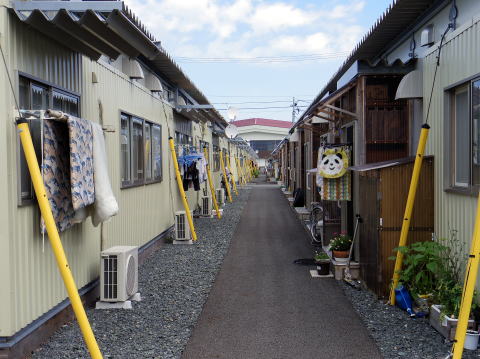
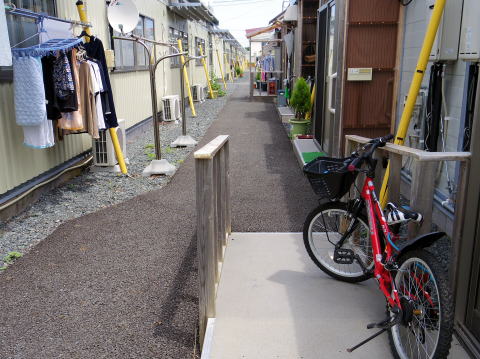
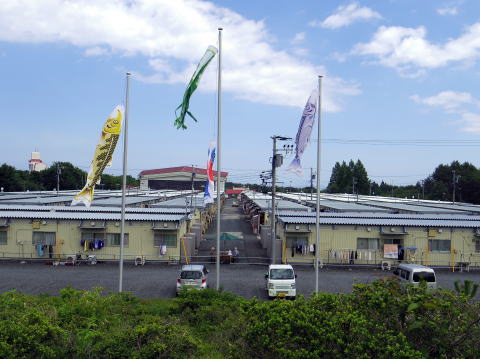
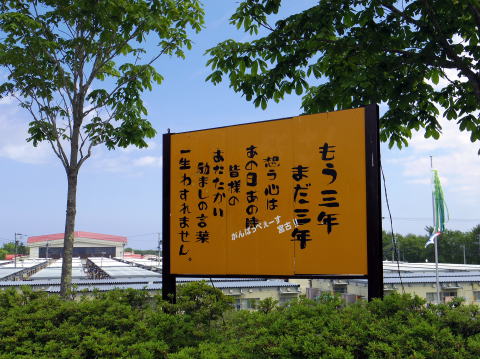
<久慈市 三陸鉄道北リアス線全線復旧>2014年4月6日
震災の為、不通だった三陸鉄道北リアス線(久慈駅~宮古駅)が全線復旧した。
北三陸はNHK朝ドラ「あまちゃん」のロケ地、久慈駅では横断幕等を復旧を祝ってにぎやかだった。
<Kuji City Sanriku Railway North Rias Line Restoration> April 6, 2014
The Sanriku Railway North Rias Line (Kuji Station to Miyako Station), which had been suspended due to the earthquake, has been fully restored.
